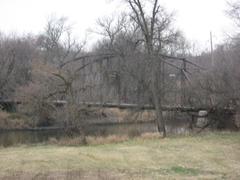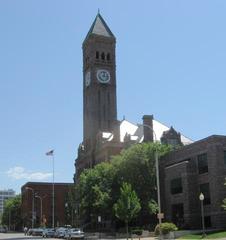South Dakota State Penitentiary Visiting Hours, Tours, and Historical Information
Date: 03/07/2025
Introduction
The South Dakota State Penitentiary (SDSP), located in northern Sioux Falls, is a cornerstone of the state’s correctional system and a site rich with history, architecture, and cultural narrative. Established in 1881 during the Dakota Territory era, SDSP is South Dakota’s largest and most secure correctional institution, operating continuously for over 140 years. Its imposing quartzite stone walls and fortress-like design are emblematic of 19th-century penal philosophies while documenting the evolution of correctional thought, from discipline and isolation to rehabilitation and education.
While SDSP is an active correctional facility with rigorous security protocols, its historical and societal significance draws interest from researchers, educators, and visitors interested in the state’s criminal justice legacy. This guide provides essential information on visiting hours, access, historical context, and local attractions, as well as insights into the penitentiary library—a unique cultural institution within its walls.
For the latest visitor guidelines, tour arrangements, or official business, it is always recommended to consult the South Dakota Department of Corrections. Additional historical and cultural context can be found through resources such as the South Dakota Historical Society Press, local museums, and online guides (prisonlocator.com, usprisonguide.com).
Table of Contents
- Introduction
- History of the South Dakota State Penitentiary
- Visiting the Penitentiary: Hours, Access, and Guidelines
- Exploring SDSP History: Museums and Online Resources
- Architectural and Institutional Significance
- Educational and Vocational Programs
- Notable Events and Incidents
- The Penitentiary Library: Cultural and Societal Impact
- Accessibility Information
- Nearby Attractions in Sioux Falls
- Frequently Asked Questions (FAQ)
- Visitor Tips
- Future Developments
- References and Further Reading
History of the South Dakota State Penitentiary
Founded in 1881, SDSP began as a territorial prison in response to the region’s growth and the need for a secure correctional facility. Its construction, initiated in 1882 near the Big Sioux River, utilized local quartzite stone—much of it quarried by inmates. The original warden’s residence, completed in 1884, and the fortress-like walls remain defining features.
Following South Dakota’s statehood in 1889, the penitentiary expanded with additional buildings and a maximum-security unit added in 1989. The G. Norton Jameson Annex, completed in 1993, further increased capacity and modernized operations. The institution has housed a diverse inmate population, including men and, at times, women under challenging historical conditions. Notable events include the execution of Donald Moeller in 1990 and the 2011 death of Correctional Officer Ronald “R.J.” Johnson, which significantly impacted correctional policy and practice.
Visiting the Penitentiary: Hours, Access, and Guidelines
Public Access and Tours:
Regular public tours or ticketed visits to SDSP are not available due to strict security protocols. However, special educational or group tours may occasionally be arranged by appointment and with advance approval from the Department of Corrections.
Visiting Hours:
- General Public: The penitentiary is not open for drop-in visits or routine public tours.
- Inmate Visitation: Visits for family and friends must be scheduled in advance, with visiting hours varying by inmate housing unit. Procedures are subject to change for security or public health reasons.
- Administrative Access: Official business may be conducted Monday through Friday, 8:00 AM to 5:00 PM by appointment.
For up-to-date visitation guidelines and scheduling, refer to the South Dakota Department of Corrections visitation page.
Requirements:
All visitors must comply with security screenings, dress codes, and facility rules. Photography and personal items are restricted within the secure perimeter.
Contact:
For inquiries or to arrange educational tours, visit the South Dakota Department of Corrections website or call their administration office.
Exploring SDSP History: Museums and Online Resources
If you are interested in the penitentiary’s past but cannot access the site directly, consider these alternatives:
- South Dakota Historical Society Press: Detailed publications on prison history and reform.
- Old Courthouse Museum: Exhibits on regional justice history and architecture.
- Online Resources:
These platforms offer extensive background, archival photos, and contemporary updates.
Architectural and Institutional Significance
SDSP’s layout and architecture reflect 19th-century penal philosophies, with robust quartzite walls and a collection of primary buildings spanning over 23 acres. Designed by Wallace L. Dow, its fortress-like appearance has been preserved even as the facility adapted to modern correctional needs.
The penitentiary remains South Dakota’s primary correctional institution for adult male offenders, housing the state’s death row and execution chamber. Its ongoing mission encompasses both security and rehabilitation, with prison industries supplying services to state agencies.
Educational and Vocational Programs
The penitentiary invests in rehabilitation through literacy, GED programs, and vocational industries such as woodworking, printing, and data entry. These initiatives are designed to foster personal growth, skill development, and successful reentry into society.
Notable Events and Incidents
SDSP has been the site of significant events in South Dakota’s criminal justice history, including executions, escape attempts, and policy-changing incidents such as the 2011 attack on Correctional Officer R.J. Johnson. These episodes have shaped public debates and institutional reforms.
The Penitentiary Library: Cultural and Societal Impact
The SDSP library stands as a unique cultural institution, reflecting the role of education and self-improvement in correctional philosophy. Established for “instruction and diversion,” it has evolved from a collection of religious tracts to a diverse resource supporting inmate education, entertainment, and cultural engagement (Lindell, 2025).
Inmates have historically participated in managing the library, fostering a culture of learning and intellectual exchange. The library’s growth mirrors broader societal attitudes toward rehabilitation and inclusion, offering materials in multiple languages and supporting educational and social programs. Its story is a testament to the transformative power of reading and learning within incarceration.
Access to the library is generally restricted to inmates and staff; educational or research visits may be arranged on a limited, case-by-case basis.
Accessibility Information
While the penitentiary itself is not accessible for public tours, administrative offices and nearby attractions in Sioux Falls (such as the Old Courthouse Museum and Falls Park) offer facilities that comply with ADA standards. If arranging an educational visit, contact the Department of Corrections in advance to discuss any specific accessibility needs.
Nearby Attractions in Sioux Falls
If you are visiting the area, consider exploring these complementary sites:
- Falls Park: Scenic park with waterfalls and walking trails.
- Old Courthouse Museum: Local history and judicial system exhibits.
- Pettigrew Home & Museum: Historic home of a prominent local figure.
- Washington Pavilion: Arts and science center in downtown Sioux Falls.
These attractions offer rich context and can easily be included in a day’s itinerary.
Frequently Asked Questions (FAQ)
Q: Can I tour the South Dakota State Penitentiary?
A: Regular public tours are not available. Special educational or group tours may be arranged by appointment with prior approval.
Q: What are the visiting hours for inmates?
A: Visiting hours vary by housing unit and must be scheduled in advance. Check the official visitation page for details.
Q: Is the penitentiary accessible for people with disabilities?
A: Administrative areas comply with accessibility standards. Contact the Department for specific arrangements.
Q: Where can I learn more about the penitentiary’s history?
A: Local museums, the South Dakota Historical Society Press, and reputable online resources provide detailed information.
Q: Are there ticketed tours or admission fees?
A: No regular ticketed tours are offered; admission for educational visits is free but must be arranged in advance.
Visitor Tips
- Plan Ahead: Arrange any special tours or visits well in advance.
- Check Current Guidelines: Security and visitation policies may change.
- Respect the Facility: Follow all rules and be mindful that SDSP is an active prison.
- Combine Your Visit: Enrich your experience by visiting nearby historical and cultural sites.
- Prepare for Accessibility Needs: Contact venues ahead to ensure accommodations.
Future Developments
The South Dakota Department of Corrections has initiated plans to replace the aging penitentiary with a new facility in Dayton Township. This development has sparked community discussion and legal review, reflecting the ongoing evolution of correctional infrastructure in the state (South Dakota Searchlight).
References and Further Reading
- South Dakota Department of Corrections
- South Dakota Department of Corrections – Penitentiary Information
- South Dakota Department of Corrections – Visitation Guidelines
- prisonlocator.com
- usprisonguide.com
- South Dakota Searchlight – Prison Site Developments
- Lindell, Lisa R. (2025). “The South Dakota State Penitentiary Library: Culture, History, and Society.” Libraries: Culture, History, and Society. (link)
Final Summary
The South Dakota State Penitentiary stands as a vital chapter in the history of Sioux Falls and the state at large. While access is limited due to security, its enduring legacy can be explored through educational tours, historical publications, and complementary local attractions. The penitentiary library, in particular, highlights the transformative impact of education and culture within correctional settings.
For comprehensive, current visitor information, consult the South Dakota Department of Corrections and explore trusted historical resources and museums. By planning ahead and respecting the institution’s protocols, you can gain a deeper appreciation for this remarkable site and its role in South Dakota’s past, present, and future.




